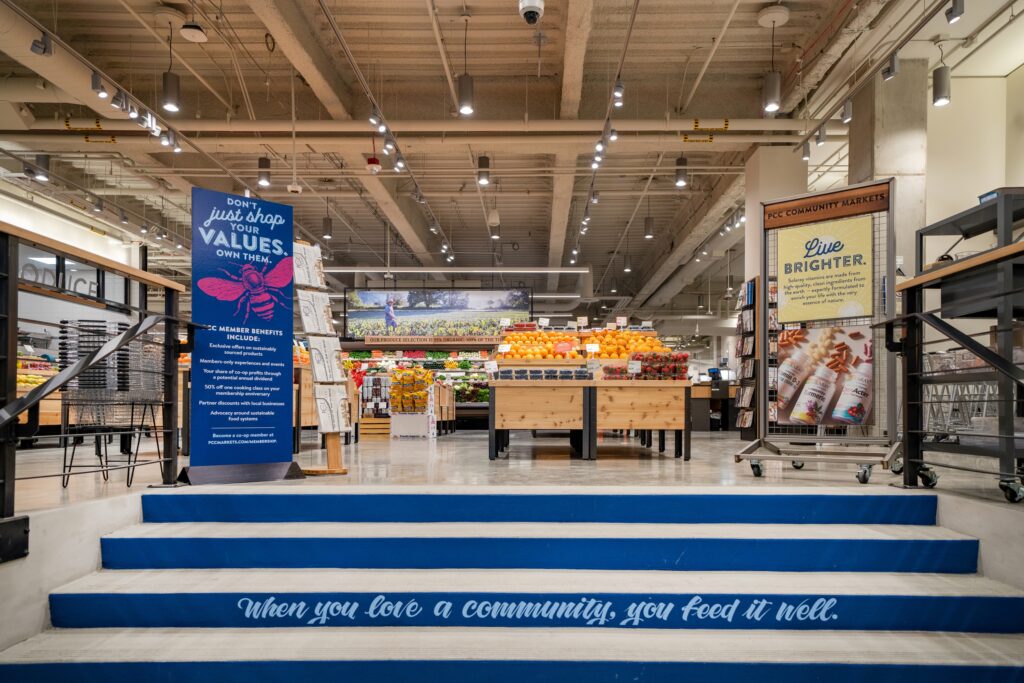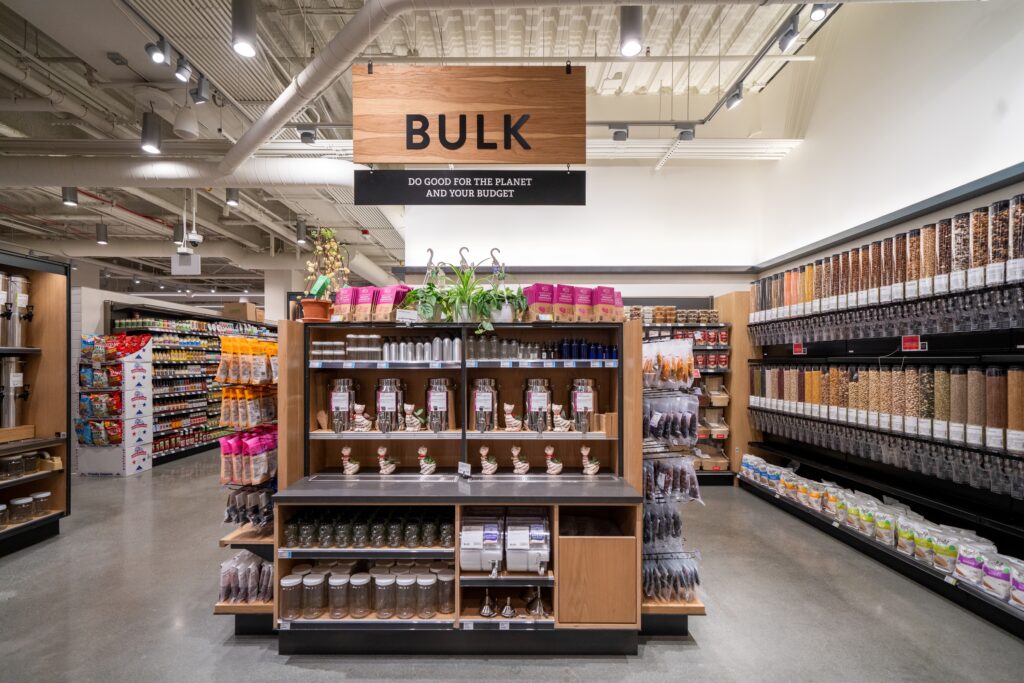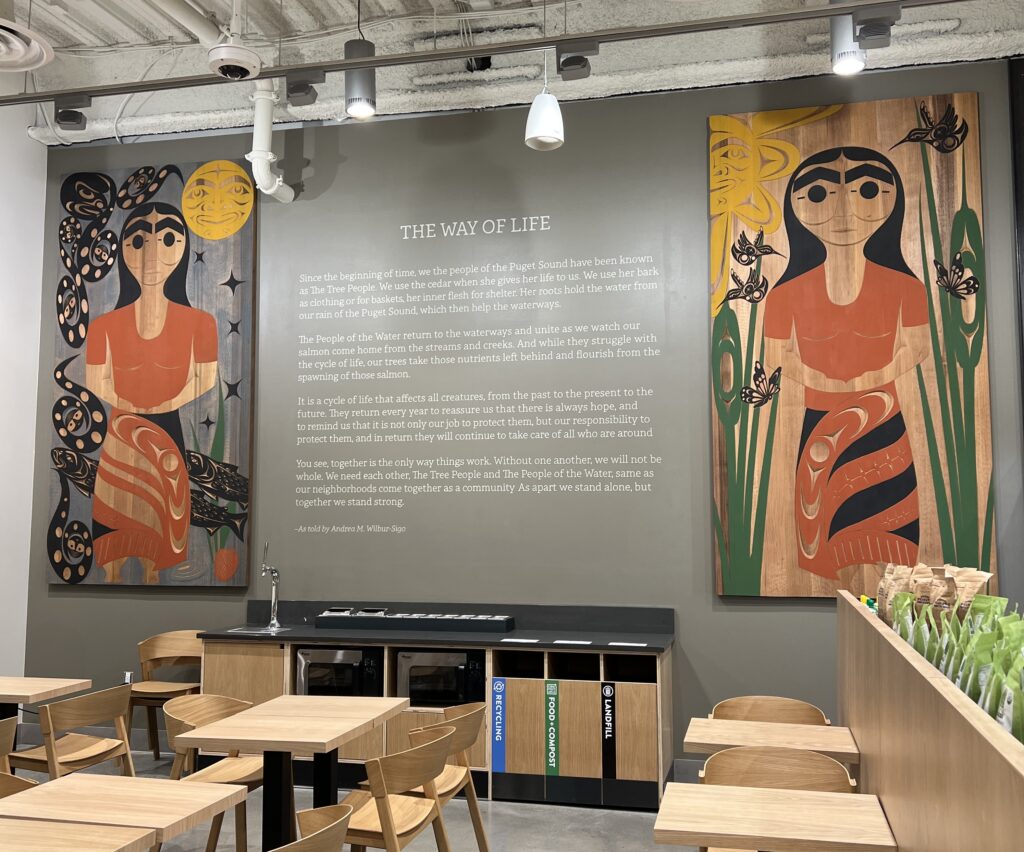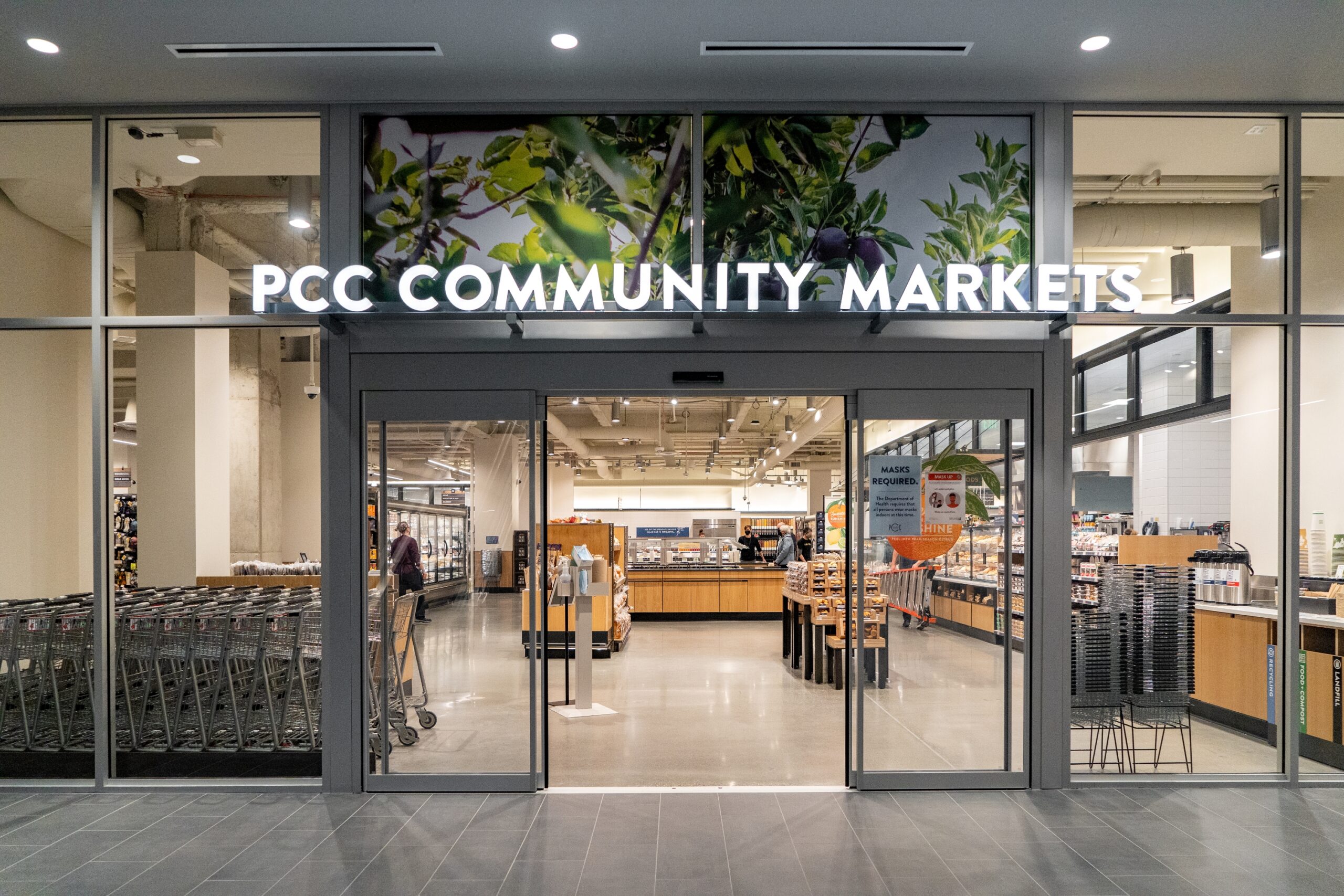VITAL STATS
| Certification Status | Petal Certified |
| Version of LBC | 3.1 |
| Location | Seattle, WA, USA |
| Project Area | 18913 SF |
| Start of Occupancy | October 2021 |
| Occupancy Type | Commercial |
| Number of Occupants | 54 |
PROJECT TEAM
| Owner | PCC Community Markets |
| General Contractor | Woodman Construction |
| Architect | MG2 |
| Mechanical Engineer | Williams Mechanical |
| Structural Engineer | Quantum |
| Interior Designer | PCC Community Markets |
| Electrical Consultant, Lighting Design | SeaTac Electric |
| Mechanical Design | Harris Group |
| Food Service Design | Bargreen Ellingson |
| Certification Consultant | Silliker & Partners |
PLACE PETAL

01. LIMITS TO GROWTH IMPERATIVE
The property is located in a commercial/service-zoned area of the core business district in downtown Seattle. The PCC project is located on the ground floor of the newly constructed Rainer Square Tower, a 58-story multi-use skyscraper. A street-front plaza and retail stores, situated above grade and underground, occupied the site for nearly 40 years prior to the PCC project. The site is adjacent to the iconic 41-story Rainier Tower, built in 1977. A number of stores previously occupied the block surrounding the Rainier Tower, serving as a shopping mall. It opened in 1978 and remained until August 2017, when the existing shops were demolished for the construction of the Rainier Square Tower. Construction of the new 58-story building was completed in January 2021, and the PCC interior project was completed in October 2021.
03. HABITAT EXCHANGE IMPERATIVE
As part of its volume approach, all PCC projects in Washington are part of the Institute’s Living Future Habitat Exchange Program.
MATERIALS PETAL

10. RED LIST IMPERATIVE
As part of its volume approach, PCC Community Markets performed an extensive product review to identify and eliminate Red List materials.
11. EMBODIED CARBON FOOTPRINT
PCC Community Markets examined the embodied carbon of its Downtown store (an initial calculation that is then used for subsequent stores as a volume effort) through several lenses. The analysis for this imperative was done at a building level — essentially, the shell that contains the PCC store project. While this does provide some context and a rough baseline for our embodied carbon impact, it also illustrates that as a tenant, PCC did not have influence over the major contributors to this carbon profile, namely concrete and steel.
12. RESPONSIBLE INDUSTRY IMPERATIVE
PCC Downtown project incorporates 29 products that have a Declare label, and the team suggested the program to 20 manufacturers that are not currently participating. This fulfills our advocacy requirements for PCC Downtown and PCC Kirkland.
13. LIVING ECONOMY SOURCING IMPERATIVE
PCC Community Market’s primary goal was to lower the embodied transportation carbon of materials for all PCC projects. While much of the project’s kitchen and refrigeration equipment is manufactured outside the Pacific Northwest, the team worked hard to limit its purchases outside of North America to a mere 3% of the project’s materials budget.
BEAUTY PETAL

19. BEAUTY + SPIRIT IMPERATIVE
Large photo murals are installed throughout the store as part of the wayfinding and environmental graphics package. The images chosen of PCC’s farmer and vendor partners celebrate fresh food, local farms, and the strong community of vendor partners.
One-of-a-kind locally created art in the dining venue celebrates the Pacific Northwest and speaks to the soul of the region. “The Way of Life,” native house posts carved by Andrea M. Wilbur-Sigo, a member of the Squaxin Island Tribe, were created to convey the connection between people and the environment. This is just one example of how PCC works with local artists to create works that represent each store’s community, elevate spirits, and provoke thought and conversation.
“My work explores the balance between the environment and industrial activities, inspiring conversations about our complicated relationship with nature. I chose to collaborate with PCC because of their focus on sustainability in their products and even in-store design. I am pleased to have this opportunity to share these carvings with the PCC community – bringing nature into an industrial space.”
– Local artist Andrea M. Wilbur-Sigo
20. INSPIRATION + EDUCATION IMPERATIVE
In deciding to pursue the Living Building Challenge, PCC strives to apply the same rigor to the construction of our new stores as we do to the products we carry inside our stores. PCC operates on a triple bottom line: financial, social, and environmental considerations are a part of everything we do. The LBC Beauty petal is one pursuit of our company’s social and environmental responsibility.
Interpretive signage is installed throughout the sales floor, adjacent to examples of various sustainability features. Signage includes detailed diagrams and informative descriptions of what makes the feature more socially and/or environmentally sustainable.
Free brochures are available by the store entrance for shoppers and visitors who want to learn more about Downtown PCC’s LBC building features. This brochure was designed to accompany the placards that contain descriptions and further details of each LBC feature. This encourages shoppers and visitors to physically tour the store with the brochure and read each placard while observing the building feature that it’s next to.
The PCC Living Building Challenge webpage was designed to educate and to be a virtual LBC tour of the store. https://www.pccmarkets.com/living-building-challenge/downtown-lbc/
The public may request a free guided store tour by submitting a request on this webpage: https://www.pccmarkets.com/stores/tours/request/
An owner’s manual details the recommended operations and maintenance of building components and systems for the performance level of the Living Building Challenge standard.
https://www.pccmarkets.com/living-building-challenge/downtown-lbc

